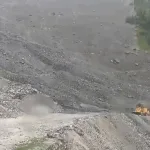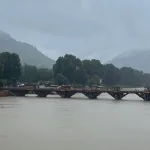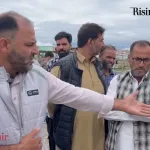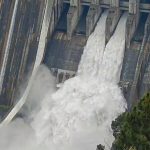Few public initiatives have delivered as tangible a benefit in Jammu & Kashmir as the Jal Jeevan Mission (JJM). In 2019, only about 30% of the Union Territory’s rural households had piped drinking water; by early 2025, that share has risen to over 81%. In real terms, more than 15 lakh rural families now enjoy a functional tap at home, yielding tangible improvements in daily convenience and public health. Such rapid gains in a region with difficult terrain and a history of patchy services reflect effective administration, engineering innovation, and grassroots participation in equal measure.
Gains in Coverage and Infrastructure
The scale of progress since 2019 is evident in both the breadth of coverage and the infrastructure laid. Over 1300 villages in J&K now have 100% of households with running water. Importantly, local Gram Panchayats in 824 of these villages have verified and declared every household as having a safe tap supply, earning them the Har Ghar Jal certification under JJM. Public institutions too have been brought under the fold: upwards of 98% of J&K’s schools and Anganwadi centers today have tap water facilities, ensuring that children and preschoolers no longer go without safe drinking water during the day.
To enable these outcomes, the UT undertook a massive infrastructure push. More than 1,100 new wells and tube-wells have been constructed or augmented, roughly 1,700 water treatment plants installed, 500 Over Head Tanks, 8000 plus service reservoirs and an extensive network of 60,000 km of water pipelines laid across both plains and remote hamlets. This expansion has vastly increased the capacity and reach of water supply, bringing piped water to many far-flung habitations for the first time.
Equally noteworthy is the emphasis on water quality alongside quantity. According to official data, nearly 30,000 water samples from rural J&K have been tested in laboratories during the current financial year and not a single sample has been found unsafe for drinking. The delivered tap water meets national safety standards across the board, a notable outcome that underscores the rigor of treatment and monitoring in the JJM rollout. In fact, J&K now ranks first among all States and UTs in the country for water quality surveillance under the mission.
Dozens of new water testing labs, including 42 with top-tier NABL accreditation and regular sampling campaigns have ensured that the push for coverage did not compromise potability. Building infrastructure is only half the battle; maintaining high water quality has clearly been a priority in the UT’s program.
Innovation in Implementation
Achieving these results in the UT’s varied geography has required a tailored and pragmatic approach. Engineers adapted water supply systems to the terrain and climatic conditions, employing insulated pipelines and gravity-fed networks in high-altitude areas to mitigate the risk of freezing, while elevation mapping enabled stable flow in undulating landscapes. The administration also prioritized the use of durable, cost-effective materials such as high-density polyethylene (HDPE) pipes, which offered resilience in landslide-prone regions and reduced installation time. Pre-fabricated modular tanks were similarly deployed to expedite construction and reduce site-specific logistical challenges.
Complementing these efforts, the administration implemented rigorous scrutiny of project designs and cost estimates prior to execution. Together, these innovations in material selection and project design optimization yielded cumulative cost savings of approximately 900 crores, which was effectively redirected to expand coverage and improve delivery efficiency. This approach reflects a governance model that balances speed with fiscal prudence and technical appropriateness, offering replicable lessons for other regions.
Community Participation and Local Governance
A key governance insight from J&K’s JJM experience is the central role of community engagement in sustaining such a large public service delivery effort. From the outset, the UT administration put local bodies at the heart of the mission. Pani Samitis (village-level water and sanitation committees) have been formed in every panchayat to plan and monitor the water schemes. These committees, comprising panchayat members, villagers (with women well represented) and frontline workers, help decide on critical aspects like selecting water sources, locating tanks, and routing pipelines in ways that best serve each habitation. The involvement of Gram Panchayats is not token; rather, it is integral. It is the Gram Panchayats that ultimately certify a village as having achieved “Har Ghar Jal” status, after verifying that every household is in fact connected and receiving safe water. This bottom-up certification process has promoted accountability and trust.
The mission’s emphasis on community ownership extends to water quality surveillance as well. In what is perhaps one of the largest community-based testing drives in the country, over 37,000 rural women in J&K have been trained in using Field Test Kits to check the quality of water at the village level. By regularly testing for basic parameters like chlorine levels or turbidity in their local water supply, these women volunteers serve as an early-warning system and a complement to the formal labs. Their participation has empowered villages to take charge of safety. If a water sample ever appears questionable, it can be flagged and addressed without waiting for external inspection.
This level of community vigilance, combined with formal monitoring, has so far ensured that J&K’s impressive coverage numbers are matched by reliable service. The JJM implementation structure also included third-party inspections and social audits, but it is the day-to-day eyes on the ground-the Pani Samitis and trained local testers – that create a culture of maintenance and prompt problem-solving. J&K’s experience thus underlines that infrastructure alone does not deliver outcomes; involving users in governance does.
Remaining Challenges
Notwithstanding the commendable progress, J&K’s water mission faces the crucial task of reaching the final 20% of rural households and making the service truly universal. The households left without tap connections are largely in the most remote, hard-to-reach pockets, scattered hamlets on difficult terrain that pose logistical and cost challenges.
Going forward, the administration will need to deploy flexible, innovative solutions to bring these last homes on board. In some cases, extending the pipeline network might not be practical; instead, decentralized solutions such as solar-powered borewell pumps, local rainwater harvesting, or small community-managed stand posts may be required to ensure no family is left behind. A one-size-fits-all approach may not work for the final stretch, and policy flexibility will be key in covering these tail-end habitations.
At the same time, sustaining the infrastructure and service quality already achieved is an ongoing challenge that cannot be ignored. Thousands of new assets- pumps, pipes, filtration plants, reservoirs- have been built under JJM, and these will require regular upkeep and operation. The mission’s true success will lie in these systems delivering reliable water supply not just today but decades into the future. This calls for a robust operations and maintenance framework at the village and block level.
The community-based model provides a good foundation: many Pani Samitis are expected to transition from overseeing construction to managing day-to-day operations of their water systems. They will, however, need continued technical support, training, and funds. The government must ensure that local plumbers, pump operators and technicians are in place, and that a system of funding is established for routine maintenance and prompt repairs. Without clear provisions for maintenance, there is a risk that some schemes could deteriorate over time. J&K’s authorities appear alert to this, and it will be important to institutionalize maintenance responsibilities now, when the infrastructure is new and public enthusiasm is high.
Finally, J&K will need to safeguard the water sources that feed this expanded supply network. Many rural schemes in the UT depend on springs, small streams, and groundwater that are sensitive to seasonal changes and long-term climate trends. There have been reports of traditional springs yielding less water in recent years due to erratic rainfall and higher demand. Ensuring source sustainability is therefore paramount. This might involve protecting and regenerating catchment areas in the upper reaches, building check-dams and recharge structures to replenish groundwater, and planning alternative backup sources for villages in case one source runs dry.
In summary, the JJM journey since 2019 illustrates how a well-funded national program, when coupled with responsive local governance and community involvement, can bring about rapid improvements in basic services. The UT has moved from a scenario of inadequate and unsafe rural water supply to one where over four-fifths of rural families have potable water at their doorstep. It now stands on the cusp of accomplishing 100% coverage, a milestone that would have transformative implications for public health and quality of life in its villages.
To get there, and to ensure every new tap continues to flow safely, the administration must keep its focus on the hard work that remains: reaching the last pockets, maintaining what has been built, and fortifying water sources against future risks. The progress so far is encouraging. What is needed now is to consolidate these gains so that “Har Ghar Jal” becomes a lasting reality in J&K, completing a remarkable governance success story without losing sight of long-term sustainability.
(The Author is Member, Jammu & Kashmir Administrative Services (JKAS)/2019 Batch and can be reached at: [email protected])








